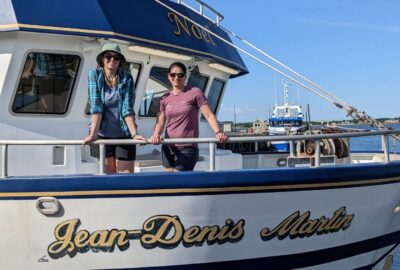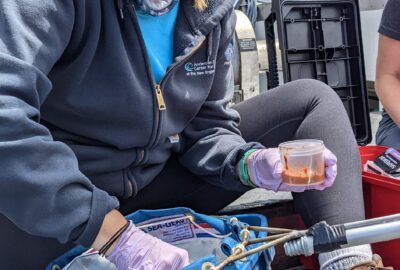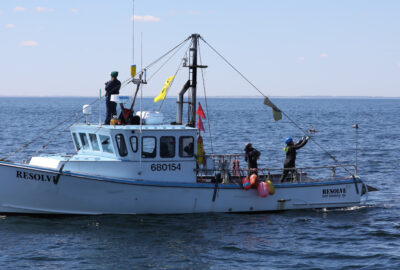Construction Update: As we enhance the look and feel of the Aquarium and make structural improvements to the penguin exhibit, some exhibits are temporarily closed, and the penguins are off exhibit until February 13. Learn more.
Looking Back at Another Summer of North Atlantic Right Whale Fieldwork
By New England Aquarium on Monday, September 22, 2025


For more than 40 years, the New England Aquarium’s Anderson Cabot Center for Ocean Life has been conducting vessel and aerial surveys to monitor North Atlantic right whales, which migrate seasonally along the east coasts of the United States and Canada, from Florida to Canada’s Gulf of St. Lawrence. Aquarium scientists have conducted fieldwork by boat in the Gulf each summer for nearly a decade, identifying right whales and collecting biological samples for further research.
This year, our team joined up with partners at the Canadian Whale Institute for two two-week offshore vessel cruises, as well as two two-week day-trip surveys between June and August. Read on to see highlights from their work!
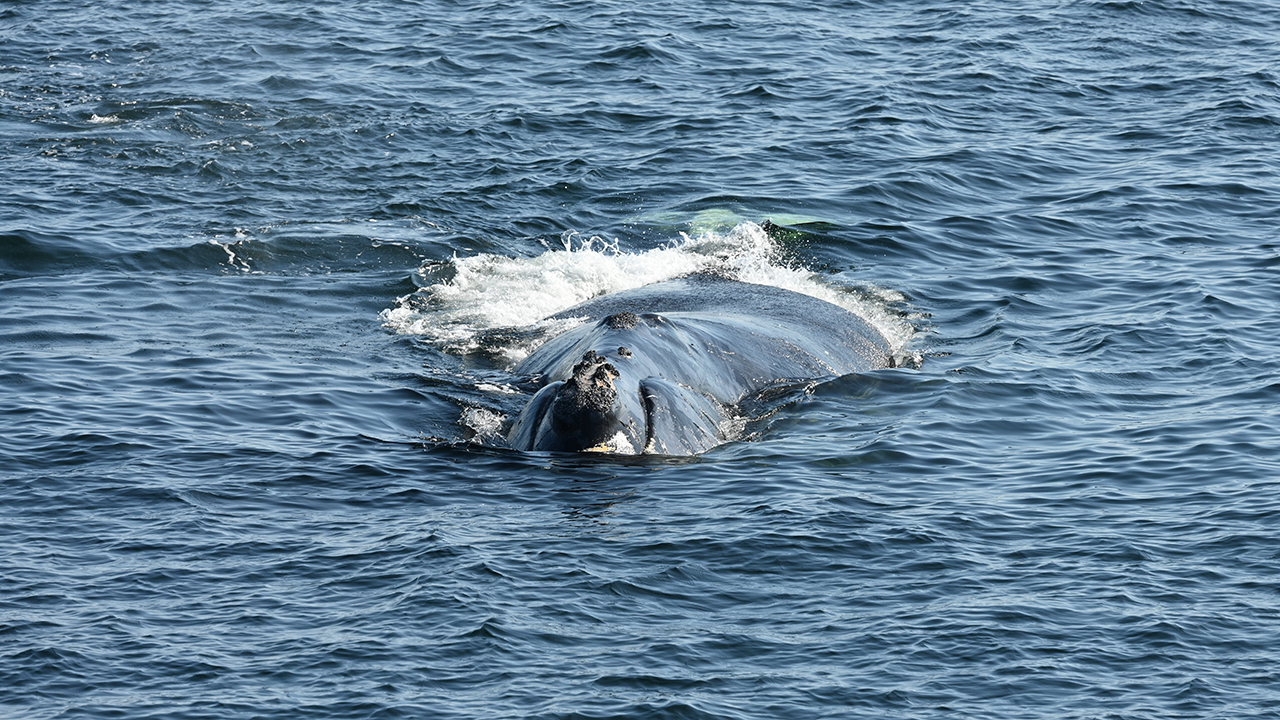
Summer by the numbers
Our team conducted 23 offshore survey days and eight small boat survey days, resulting in 86 individual right whales photographed and identified—about a quarter of the entire population!
Some notable right whales we identified were world travelers Koala (Catalog #3940) and Curlew (Catalog #4190), Ruffian (Catalog #3530), and sponsorship whales Aphrodite (Catalog #1701) and Calvin (Catalog #2223)—who you might recognize if you’ve ever seen our life-size inflatable Calvin during special events on Central Wharf. Calvin was a particularly welcome sight, as our team had not seen her in the past three years. Going so long without a sighting has been a rare occurrence since her first sighting in 1992!
Along with right whales, the team saw a variety of other species, including a record of 54 basking sharks and one blue whale.
We were also hard at work collecting other data and samples:
- 36 photogrammetry flights
- 15 blow samples
- 1 poop sample
- 25 acoustic deployments
- 60+ hours of acoustic recordings
- 26 sets of lost crab gear retrieved or reported (another new record!)
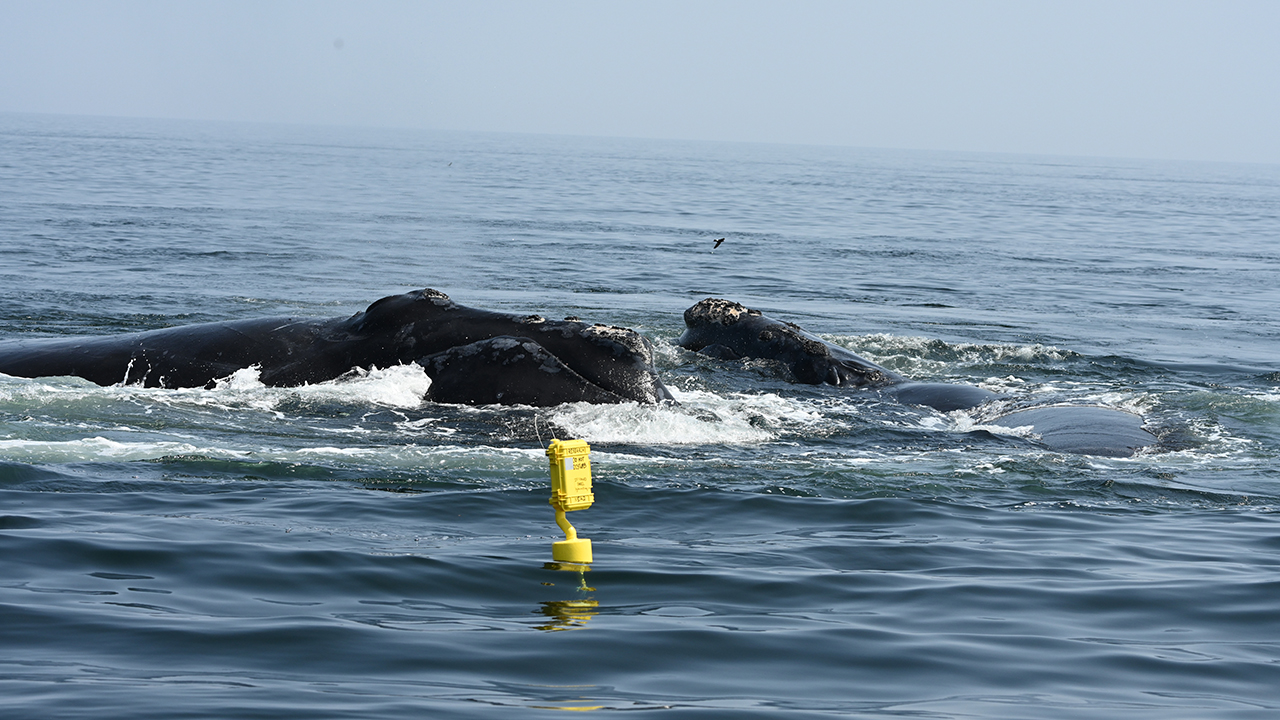
Drones and “Limoncello”
Along with collecting biological samples (we gathered one poop sample from Catalog #4980), the team was working hard to gather data from above and below the water, too! Using specialized drones, we collected photogrammetry—measuring a whale’s body shape and condition—to gain more insights into a whale’s health. For the second year in a row, we also used drones to collect samples of blow, which will be analyzed by our collaborators up at St. Mary’s University.
Below the surface, we deployed an acoustic drifter to record right whale vocalizations to further understand and characterize their vocal behavior in the Gulf of St. Lawrence. Our acoustic drifter, designed in-house and affectionately nicknamed “Limoncello” for its bright yellow color, collected over 60 hours of recordings near right whales. The recordings were rich with complex vocalizations from right whales, as well as calls from a variety of other species, including sperm whales and our lone blue whale. At one point, Limoncello spent about 25 hours out overnight, drifting 20 nautical miles south of its original deployment position. The team gave chase the following day and, happily, Limoncello was recovered in fine condition (but let’s just say, we didn’t do that again).

Lost gear recovery
A major role that these surveys continue to play in the Gulf of St. Lawrence is helping to remove lost crab gear from the water column, directly reducing entanglement risk. We achieved a new record this year by retrieving or reporting 26 lost crab traps!
Usually, by the time we start our summer surveys, the snow crab fishery has reached its annual quota and is functionally closed for the season, meaning all active gear has been hauled and removed. So, when we find gear out in right whale habitat, it is now considered “lost,” and we are permitted by the Canadian Department of Fisheries and Oceans (DFO) to retrieve the gear and bring it back to the dock for collection. We can do this when we are working off our larger, “offshore” platform, which is an out-of-season crab fishing vessel. It is a great collaboration between our scientists, the crab fishers, and DFO, all working towards the same goal of reducing entanglement risk.
This research is done in collaboration with the Canadian Whale Institute and is made possible thanks to the generosity of Irving Oil and the Island Foundation. We are extremely grateful to Irving Oil for partnering with us on this critical research since 1998.

